Twisted Metal Season 1 Review - A Twisted And Fun Reinvention

“This is gonna be fun!” exclaims Sweet Tooth as he lobs his machete towards Anthony Mackie’s John Doe, who narrowly dodges the weapon as it careens into a casino slot machine.
I’m not sure I agree with the iconic murder clown. I’m watching the first teaser for Peacock’s Twisted Metal, and while I wasn’t sure what to expect from an adaptation of one of my favorite childhood franchises, whatever hopes I had fell away watching this strange out-of-context clip. Sweet Tooth dancing to and singing the lyrics to Sisqó’s “Thong Song?” Showing a comedic fistfight instead of vehicles blowing each other up? I know the showrunners are aiming for laughs, but what have they done to my game?
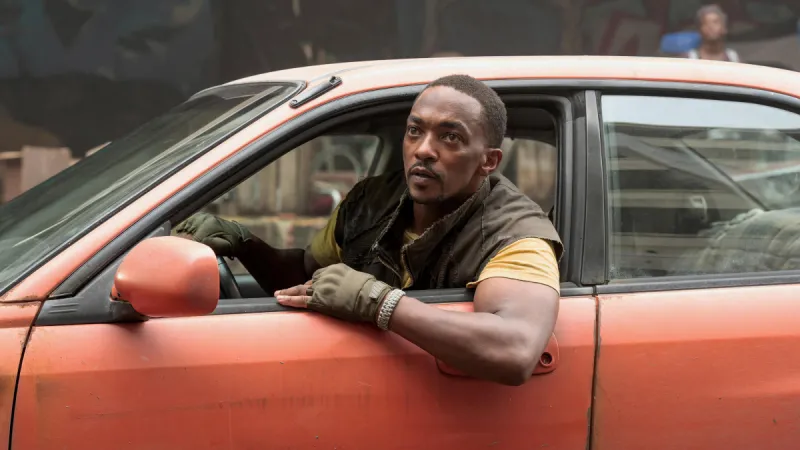
After watching the show’s first season, I must confess: I really like Twisted Metal.
Before Joel and Ellie, Kratos, Nathan Drake, and even Crash Bandicoot were the faces of PlayStation, there was Twisted Metal. The franchise popularized the now-dormant car combat genre thanks to its wildly fun gameplay, dark humor, and a demented cast of characters – notably its mascot, Sweet Tooth. The chaotic action carried players through numerous entries, from its highest highs (Twisted Metal 2, Twisted Metal: Black) to its lowest lows (Twisted Metal 3 and 4).
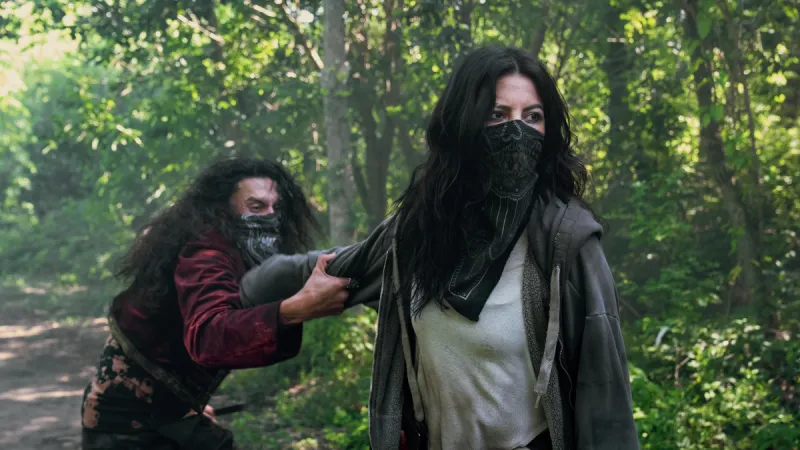
Despite its success, the series has been hibernating since its enjoyable but forgettable 2012 reboot. Hope for a revival unexpectedly arose when Pea‑ cock announced a 10-episode live-action adaptation. Helmed by Cobra Kai scribe Michael Jonathan Smith alongside Deadpool writers Rhett Smith and Paul Wernick, Twisted Metal stars John Doe, an amnesiac delivery driver (dubbed a Milkman) in a post-apocalyptic United States. At the dawn of the 21st century, a calamity caused society to collapse. Now, 20 years later, remnants of humanity have huddled in walled cities across the now Divided States of America. Those living outside these shelters fight daily for survival on the lawless open roads, which numerous gang factions and deranged personalities dominate.
Series fans may tilt their heads at this setup, which sounds closer to Mad Max than Twisted Metal. The games have always centered around a singular concept: drivers compete in a death tournament organized by Calypso, a mysterious man with the power to grant any wish to the victor (usually with an unfortunate, monkey paw-style twist). Though different, this approach successfully introduces new layers to the mythos I didn’t know I wanted.
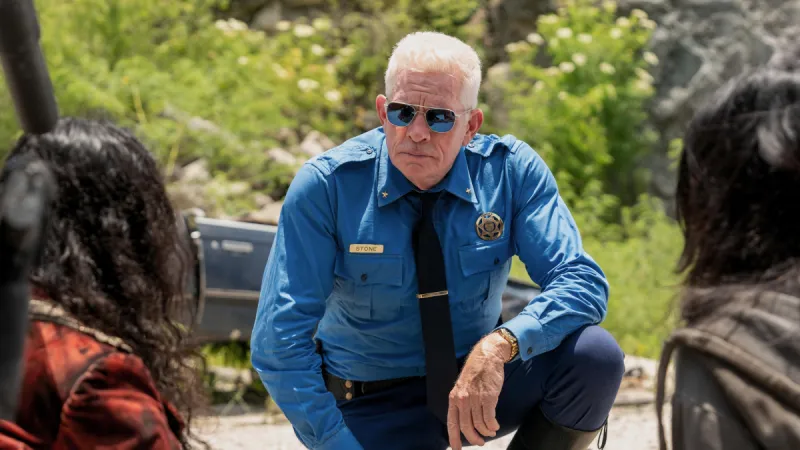
Firstly, it made me care about the people behind the wheel, something I never had outside of Sweet Tooth. John Doe, a man tasked with delivering a special package to earn permanent residence in New San Francisco, is a goofy idiot with a good heart. Pairing him with Quiet (Stephanie Beatriz), a mysterious loner on a revenge quest, leads to some fun expletive-laden bickering, not unlike the banter dominating the Guardians of the Galaxy films. In fact, the series’ tone is highly reminiscent of James Gunn’s work, particularly HBO’s Peacemaker. That’s a compliment. Twisted Metal’s often idiotic, violent humor doesn’t always land, but it’s fully aware of how stupid it is and embraces silliness in ways I usually find more entertaining than cringy. Highlights include Stu, a clumsy, well-meaning everyman played by Mike Mitchell, but the series’ best character is its most recognizable: Sweet Tooth.
Voiced by Will Arnett and physically performed by Joe Seanoa, AKA Samoa Joe, the pair capture the clown’s intimidating presence and unhinged, sometimes humorous, personality. The show manages a great balance of making Sweet Tooth scary when he needs to be and a fun-loving outcast you almost want to hang out with … almost. Agent Stone, the show’s main villain portrayed by Thomas Haden Church, offers the perfect foil as a cold, law-obsessed sheriff running a brutal police force hellbent on restoring order.
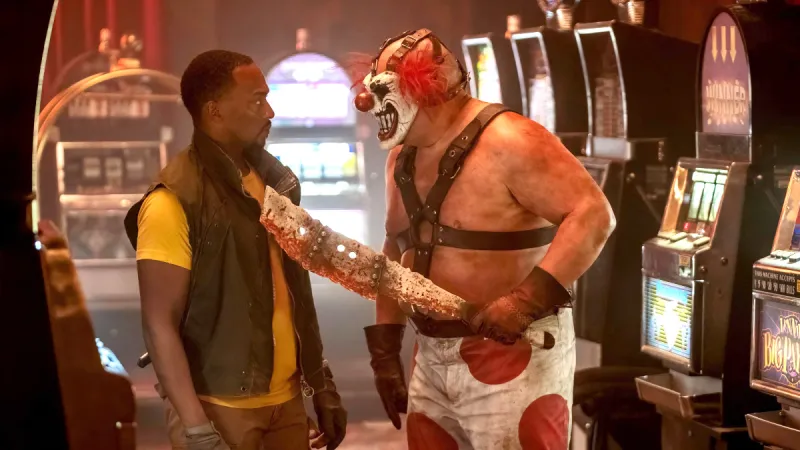
Some adaptations almost feel ashamed of their source material, but Twisted Metal embraces its roots through copious references. Some are as blatantly ridiculous as John entering a Twisted Metal 2 cheat code to activate his car’s defenses. Others are subtle, with some cameos going over my head until I looked up their name in a Wiki. The best are self-aware; expect to see a few faces from the generally reviled Twisted Metal 4 treated like utter losers and bullet fodder. In a few cases, the show redeems less beloved drivers – I never thought I’d be rooting for Flower Power.
The story juggles multiple threads without getting overburdened and does a solid job fleshing out John, Quiet, Stone, and Sweet Tooth with flashbacks detailing their respective backstories. The performances are generally good, and the story features quite a bit of heart with some surprisingly touching moments. Though I sometimes felt emotional whiplash jumping from hyper goofy spectacle to deadly serious plot twist, the show manages a respectable tonal balance.
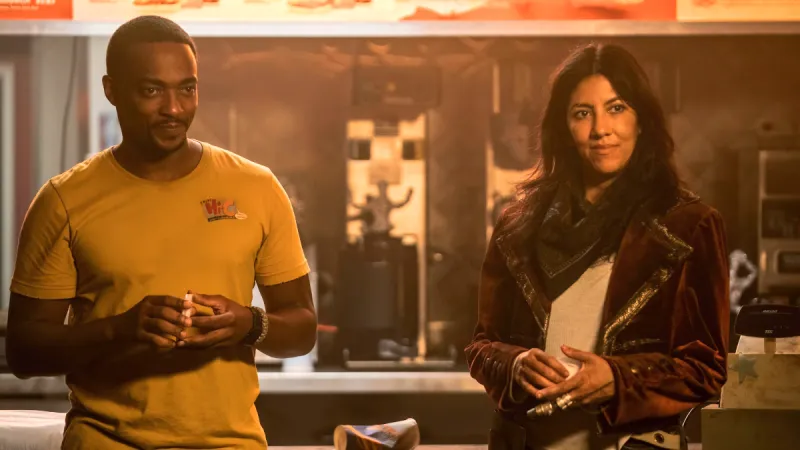
Unfortunately, Twisted Metal doesn’t feature nearly as much car combat as I expected; most vehicular skirmishes wrap up in a few minutes, and much of the prolonged action is on foot. Without spoiling, the plot eventually rewards patient fans with what they’re looking for, with a satisfying finale that leaves enough doors open to lure viewers back for a potential second season. The best compliment I can give is that I hope a second season happens. While I was uneasy, I had a blast once I settled into the show’s groove and the plot hit the gas. Like the games, Twisted Metal is undeniably stupid and gratuitously violent, but it swings for the fences and hits home runs more often than not.
Twisted Metal premieres on Peacock on July 27.
source https://www.gameinformer.com/2023/07/24/a-twisted-reinvention-how-peacocks-twisted-metal-renewed-my-love-of-the-franchise
